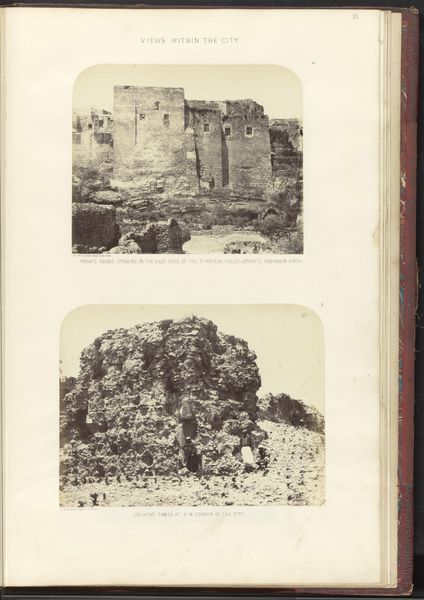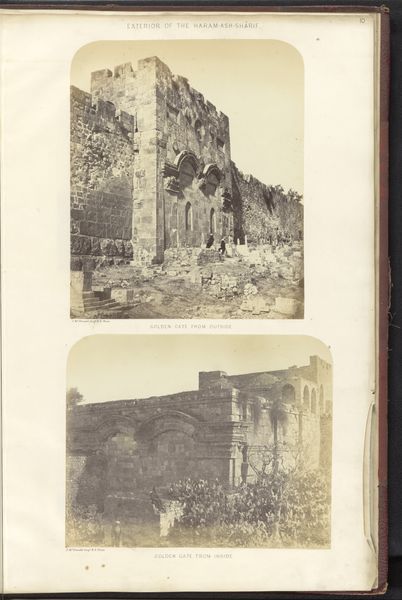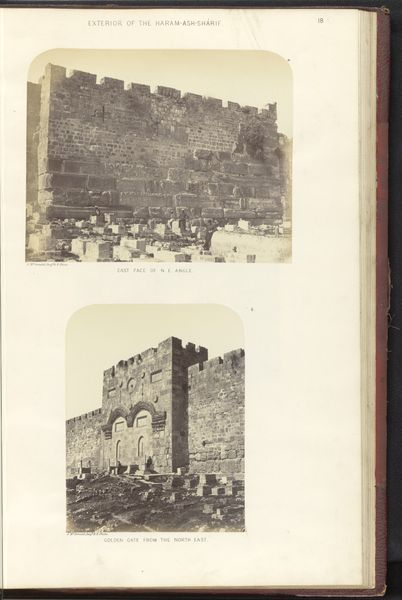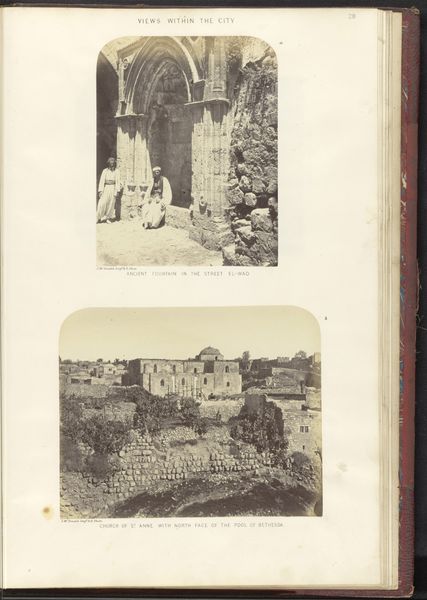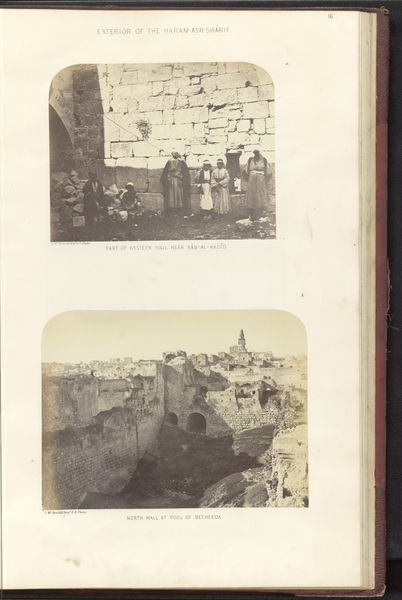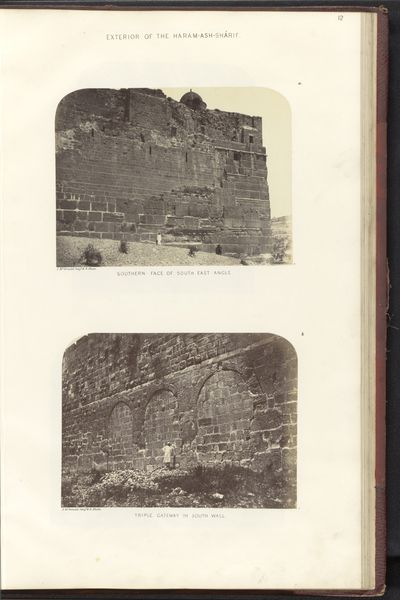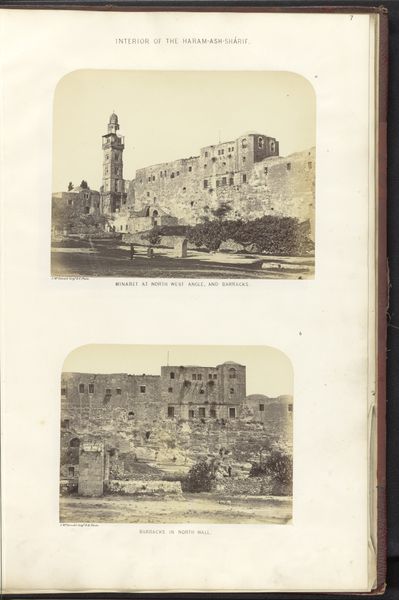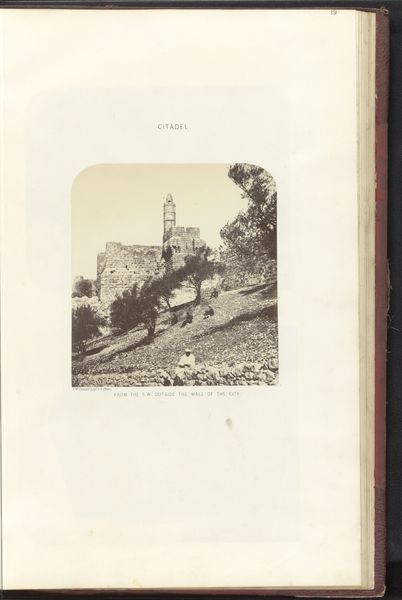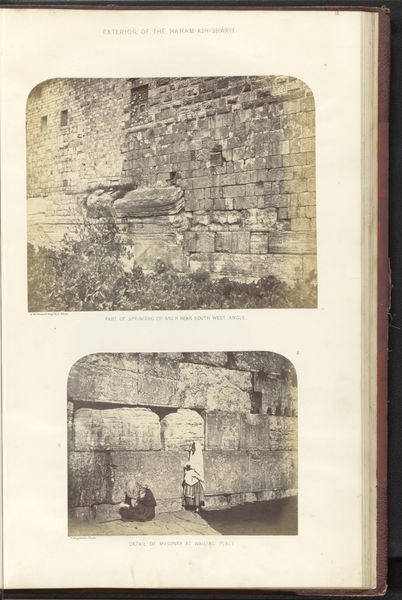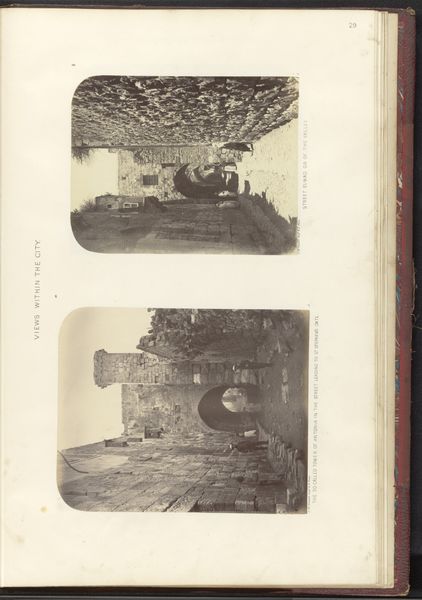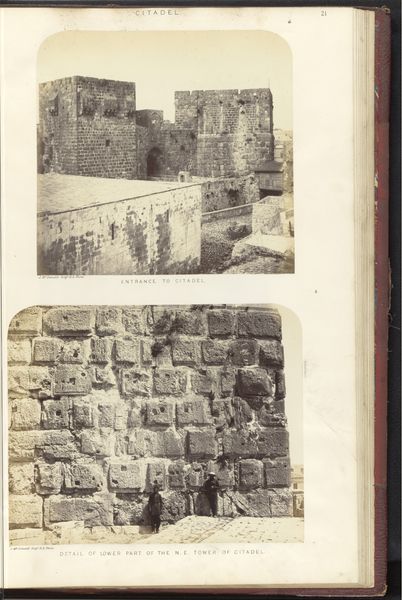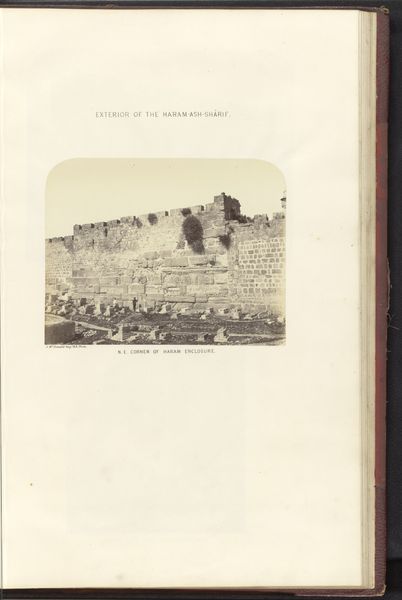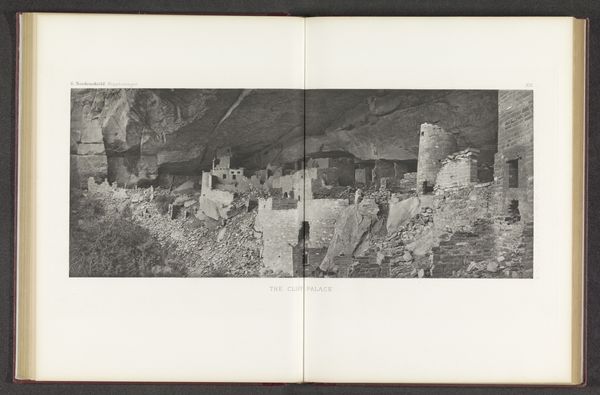
Twee gezichten op de noordelijke muur van Jeruzalem, ten oosten van de Damascuspoort before 1865
0:00
0:00
photography, albumen-print
#
landscape
#
photography
#
orientalism
#
cityscape
#
albumen-print
Dimensions: height 523 mm, width 340 mm
Copyright: Rijks Museum: Open Domain
Curator: It strikes me immediately how imposing, almost eternal, the walls seem. There's a powerful sense of endurance captured in this albumen print. Editor: That’s a perfect entry point. This photograph, entitled "Twee gezichten op de noordelijke muur van Jeruzalem, ten oosten van de Damascuspoort"—"Two Views of the Northern Wall of Jerusalem, East of the Damascus Gate"—was taken sometime before 1865. Its attribution points to James McDonald, whose photography provided insights into 19th-century understandings of landscape and orientalism. What can be seen as historical truth and to what point must we look for cultural imposition? Curator: I can’t help but read this image through a postcolonial lens. McDonald's work fits within a larger pattern of Western representation of the 'Orient'. The composition romanticizes the scene. Do you find that, too? The inhabitants look almost like props, meant to exaggerate the scale of Western imposition on the culture. Editor: Perhaps, but consider the sheer labor embedded within these city walls. Each stone represents human effort, quarried and placed strategically. McDonald documented the social and physical landscape. Curator: Yes, and I appreciate you raising the tangible labor, but I want us also to look at this visual object as constructed. The placement of the figures, the angle... these are calculated to construct a certain narrative for a European audience that likely never encountered the scene in person. I can't escape thinking of gender, class and identity intersectionality in these works. I am constantly faced with questions of ownership and identity. Editor: I take your point about ownership and representation, particularly given photography's problematic history. But even accepting that imposed framework, let’s not forget that these images offer invaluable material documentation of the site. Consider the chemical process: albumen from eggs coating paper that then records the real-world light hitting the walls of the city. This is not simply a romantic ideal of something imagined, the physical site has its presence imprinted on the paper itself. We must seek a balanced understanding to fully analyze this photo. Curator: I completely agree! And maybe our exchange reflects the inherent tensions of understanding such a multifaceted object—that dialogue can deepen how we critically engage with it and the stories that it can tell. Editor: Agreed. These two views presented invite precisely this tension: The solid craft that forms those ancient walls is just one perspective into their stories. I encourage visitors to look at their composition, consider the laborers who created the walls, then examine where they stand today.
Comments
No comments
Be the first to comment and join the conversation on the ultimate creative platform.
